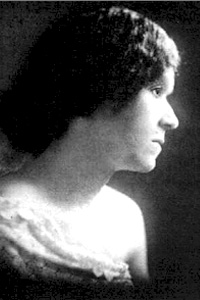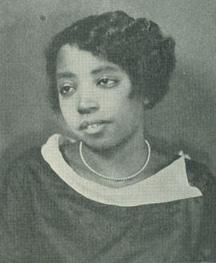Related Research Articles

Julie Ethel Dash is an American filmmaker, music video and commercial director, author, and website producer. Dash received her MFA in 1985 at the UCLA Film School and is one of the graduates and filmmakers known as the L.A. Rebellion. The L.A. Rebellion refers to the first African and African-American students who studied film at UCLA. Through their collective efforts, they sought to put an end to the prejudices of Hollywood by creating experimental and unconventional films. The main goal of these films was to create original Black stories and bring them to the main screens. After Dash had written and directed several shorts, her 1991 feature Daughters of the Dust became the first full-length film directed by an African-American woman to obtain general theatrical release in the United States. In 2004, Daughters of the Dust was named to the National Film Registry by the Library of Congress for its "cultural, historical and aesthetic significance". Stemming from the film's success, Dash also released novels of the same title in 1992 and 1999. The film was later a key inspiration for Beyoncé's 2016 album Lemonade.
Their Eyes Were Watching God is a 1937 novel by American writer Zora Neale Hurston. It is considered a classic of the Harlem Renaissance, and Hurston's best known work. The novel explores protagonist Janie Crawford's "ripening from a vibrant, but voiceless, teenage girl into a woman with her finger on the trigger of her own destiny".

Jessie Redmon Fauset was an editor, poet, essayist, novelist, and educator. Her literary work helped sculpt African-American literature in the 1920s as she focused on portraying a true image of African-American life and history. Her black fictional characters were working professionals which was an inconceivable concept to American society during this time. Her story lines related to themes of racial discrimination, "passing", and feminism.
African American literature is the body of literature produced in the United States by writers of African descent. Phillis Wheatley was an enslaved African woman who became the first African American to publish a book of poetry, which was published in 1773. Her collection, was titled Poems on Various Subjects, Religious and Moral. Olaudah Equiano was an African man who wrote The Interesting Narrative of the Life of Olaudah Equiano, an autobiography published in 1789 that became one of the first influential works about the transatlantic slave trade and the experiences of enslaved Africans. His work was published sixteen years after Phillis Wheatley's work.

Plum Bun: A Novel Without a Moral is a novel by Jessie Redmon Fauset first published in 1928. Written by an African-American woman who, during the 1920s, was the literary editor of The Crisis, it is often seen as an important contribution to the Harlem Renaissance.

Georgia Blanche Douglas Camp Johnson, better known as Georgia Douglas Johnson, was a poet and playwright. She was one of the earliest female African-American playwrights, and an important figure of the Harlem Renaissance.

Marita Bonner, also known as Marieta Bonner, was an American writer, essayist, and playwright who is commonly associated with the Harlem Renaissance. Other names she went by were Marita Occomy, Marita Odette Bonner, Marita Odette Bonner Occomy, Marita Bonner Occomy, and Joseph Maree Andrew. On December 29, 1921, along with 15 other women, she chartered the Iota chapter of Delta Sigma Theta sorority.
Color Struck is a play by Zora Neale Hurston. It was originally published in 1926 in Fire!! magazine. Color Struck won second prize in Opportunity Magazine's literary contest for best play. Color Struck was not staged during the Harlem Renaissance.

Eulalie Spence was a writer, teacher, director, actress and playwright from the British West Indies. She was an influential member of the Harlem Renaissance, writing fourteen plays, at least five of which were published. Spence, who described herself as a "folk dramatist" who made plays for fun and entertainment, was considered one of the most experienced female playwrights before the 1950s, and received more recognition than other black playwrights of the Harlem Renaissance period, winning several competitions. She presented several plays with W.E.B. Du Bois' Krigwa Players, of which she was a member from 1926 to 1928. Spence was also a mentor to theatrical producer Joseph Papp, founder of The Public Theater and the accompanying festival currently known as Shakespeare in the Park.

Who's Been Sleeping in My Bed? is a 1963 American comedy film directed by Daniel Mann and starring Dean Martin, Elizabeth Montgomery, and Carol Burnett.
Mary P. Burrill was an early 20th-century African-American female playwright of the Harlem Renaissance, who inspired Willis Richardson and other students to write plays. Burrill herself wrote plays about the Black Experience, their literary and cultural activities, and the Black Elite. She featured the kind of central figures as were prominent in the black society of Washington, D.C., and others who contributed to black women's education in early twentieth century.
Rachel is a play that was written in 1916 by African American teacher, playwright and poet Angelina Weld Grimké. Grimké submitted the play to the Drama Committee of the National Association for the Advancement of Colored People (NAACP). For the first production of the play the program read: "This is the first attempt to use the stage for race propaganda in order to enlighten the American people relative to the lamentable condition of the millions of Colored citizens in this free republic."

The themes encompassed in African-American writer Maya Angelou's seven autobiographies include racism, identity, family, and travel. Angelou (1928–2014) is best known for her first autobiography, I Know Why the Caged Bird Sings (1969). The rest of the books in her series are Gather Together in My Name (1974), Singin' and Swingin' and Gettin' Merry Like Christmas (1976), The Heart of a Woman (1981), All God's Children Need Traveling Shoes (1986), A Song Flung Up to Heaven (2002), and Mom & Me & Mom (2013).
Funnyhouse of a Negro is a one-act play by Adrienne Kennedy. The play opened off-Broadway in 1964 and won the Obie Award for Distinguished Play. The play shared this award with Amiri Baraka's Dutchman, and was influenced by her radical imagination; critics have read it in conversation with both the Black Arts Movement and the Theater of the Absurd. While the play has been produced on stage numerous times, it has been more frequently studied in academic settings than it has been produced.

In feminist theory, the male gaze is the act of depicting women and the world in the visual arts and in literature from a masculine, heterosexual perspective that presents and represents women as sexual objects for the pleasure of the heterosexual male viewer. The concept was first articulated by British feminist film theorist Laura Mulvey in her 1975 essay, "Visual Pleasure and Narrative Cinema". Mulvey's theory draws on historical precedents, such as the depiction of women in European oil paintings from the Renaissance period, where the female form was often idealized and presented from a voyeuristic male perspective. Art historian John Berger, in his work Ways of Seeing (1972), highlighted how traditional Western art positioned women as subjects of male viewers’ gazes, reinforcing a patriarchal visual narrative.
The Purple Flower by Marita Bonner, is a one-act play typically considered to be Bonner's masterpiece. Not set in any specific place or time, it is a metaphor for racial issues in the U.S. Bonner was born on June 16, 1899, in Boston, Massachusetts. She had short stories and essays published in Opportunity: A Journal of Negro Life and The Crisis magazine. She became an important literary figure in the Harlem Renaissance era which is the root of her writing inspiration. The Purple Flower was first published in The Crisis in 1928. This play is an allegory for racism and sexism against black women. This play was never performed in Bonner's lifetime.
The Pot Maker or The Pot Maker: a Play to be Read is a short one act play by Marita Bonner. The play was written in 1927 and was the first Bonner wrote, the others being The Purple Flower and Exit, an Illusion: A One-Act Play. It was published in the February 1927 issue of Opportunity: A Journal of Negro Life.
Blue-Eyed Black Boy is a 1930 one-act play by Georgia Douglas Johnson, one of the earliest African-American playwrights and an American poet that was a member of the Harlem Renaissance.
Songs of the Harlem River: Forgotten One Acts of the Harlem Renaissance is a collection of five one-act plays written between 1920 and 1930 by several African-American playwrights at the time including Marita Bonner, Ralf M. Coleman, Georgia Douglas Johnson, Willis Richardson, and Eulalie Spence. Also included are poems by Sterling A. Brown, Langston Hughes, and Jessie Fauset.

The "Erinsborough High Fire" is a storyline from the Australian television soap opera Neighbours that ran on 20 and 21 October 2015, airing over episodes 7237 and 7238. These episodes were broadcast on 4 and 5 November 2015 in the United Kingdom. The storyline sees the fictional Erinsborough High School engulf in a deliberately-lit fire, which leads to a long arson mystery. Involving half the cast, the storyline was Neighbours' big stunt event of the year and came about when Paul Robinson sells the school to Eden Hills Grammar for it to be closed, causing the staff and the students to protest in a school sleep-out. Many characters' have their storylines climaxed whilst being trapped in the fire, including the love triangle between Brad Willis, Lauren Turner and Terese Willis when Brad chooses to save Lauren over Terese. Expecting mother Amber Turner and Susan Kennedy are trapped in a classroom during the fire when Amber goes into labour and the two are forced to decide whether to "fight or flight" in "genuinely frightening" scenes.
References
- ↑ Perkins, Kathy A. (1989). Black Female Playwrights: An Anthology of Plays before 1950. Indiana: Bloomington. pp. 200–206.
- ↑ Khanna, Nikki (2011-09-16). Biracial in America: Forming and Performing Racial Identity. Lexington Books. ISBN 9780739145760.
- ↑ Gray, Herman (1995). "Black Masculinity and Visual Culture". Callaloo. 18 (2): 401–405. doi:10.1353/cal.1995.0055. ISSN 1080-6512.
- ↑ Roses, Lorraine Elena; Randolph, Ruth Elizabeth (1987-01-01). "Marita Bonner: In Search of Other Mothers' Gardens". Black American Literature Forum. 21 (1/2): 165–183. doi:10.2307/2904427. JSTOR 2904427.
- 1 2 Allen, Carol (1998-01-01). Black Women Intellectuals: Strategies of Nation, Family, and Neighborhood in the Works of Pauline Hopkins, Jessie Fauset, and Marita Bonner. Taylor & Francis. ISBN 9780815331124.
- ↑ Huggins, the late Nathan Irvin (2007-05-02). Harlem Renaissance. Oxford University Press. ISBN 9780199839025.
- ↑ Hodkinson, Yvonne (1991). Female parts: the art and politics of women playwrights. Montréal. hdl:2027/mdp.39076001172613. ISBN 1895431077.